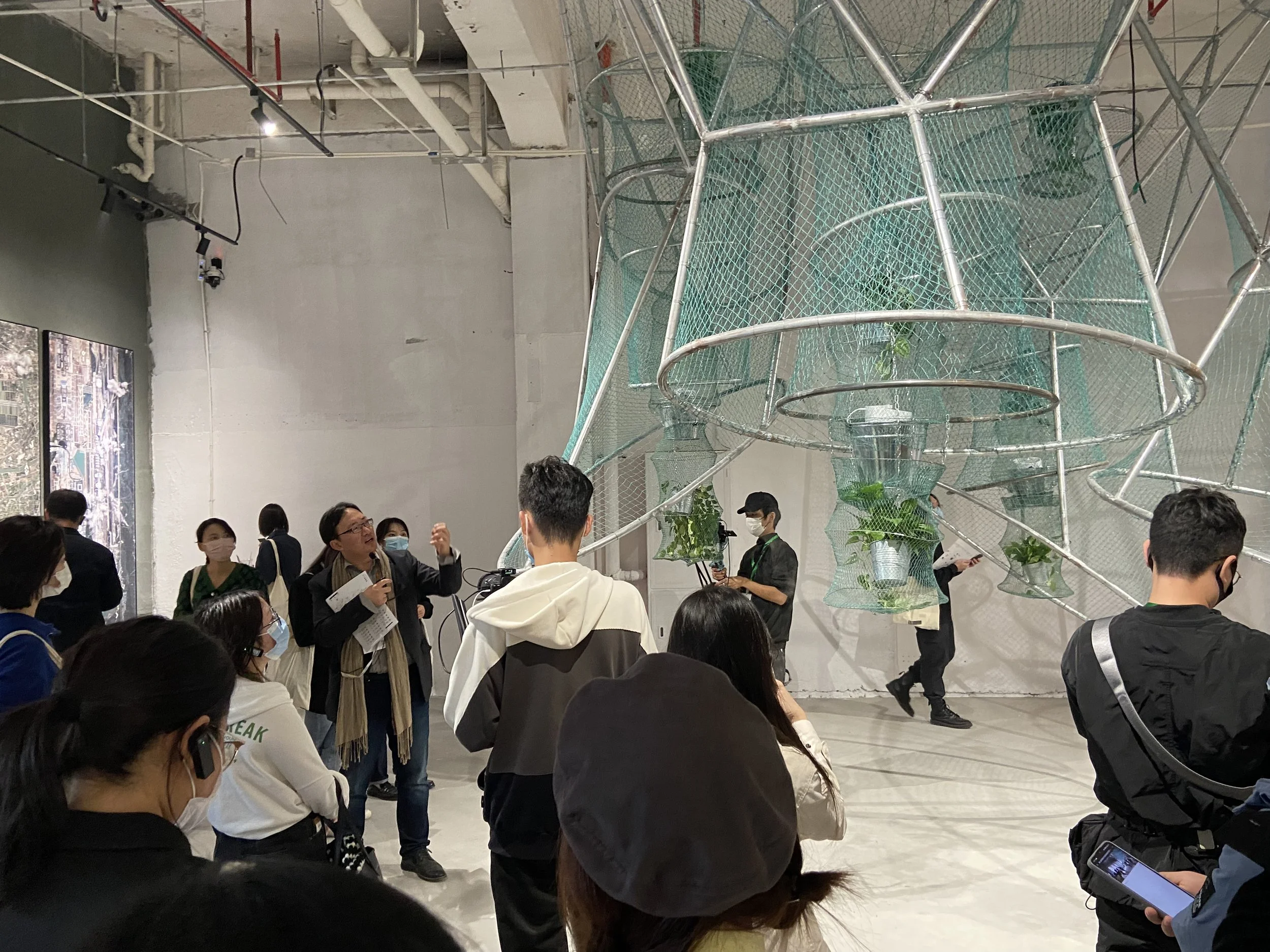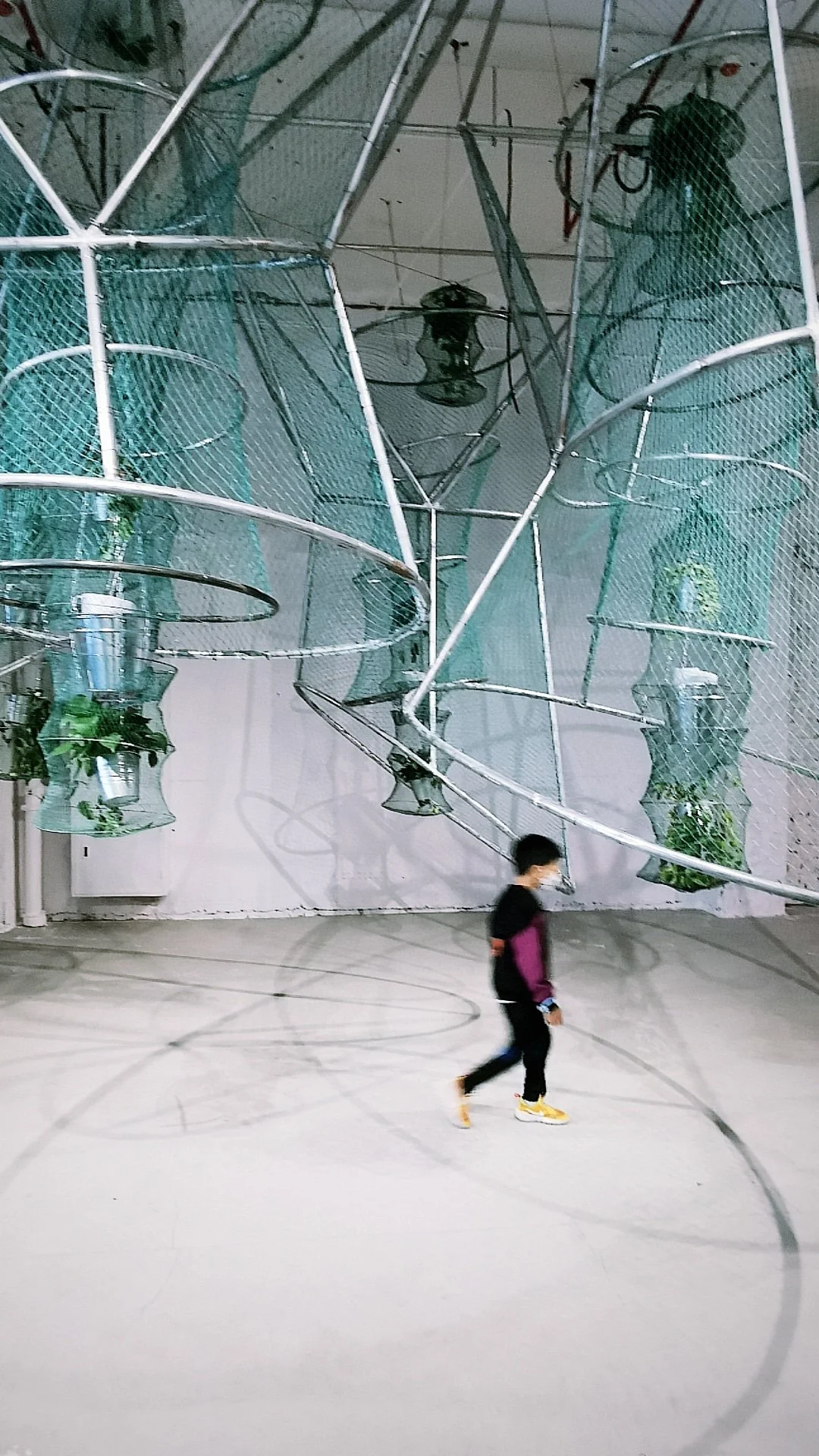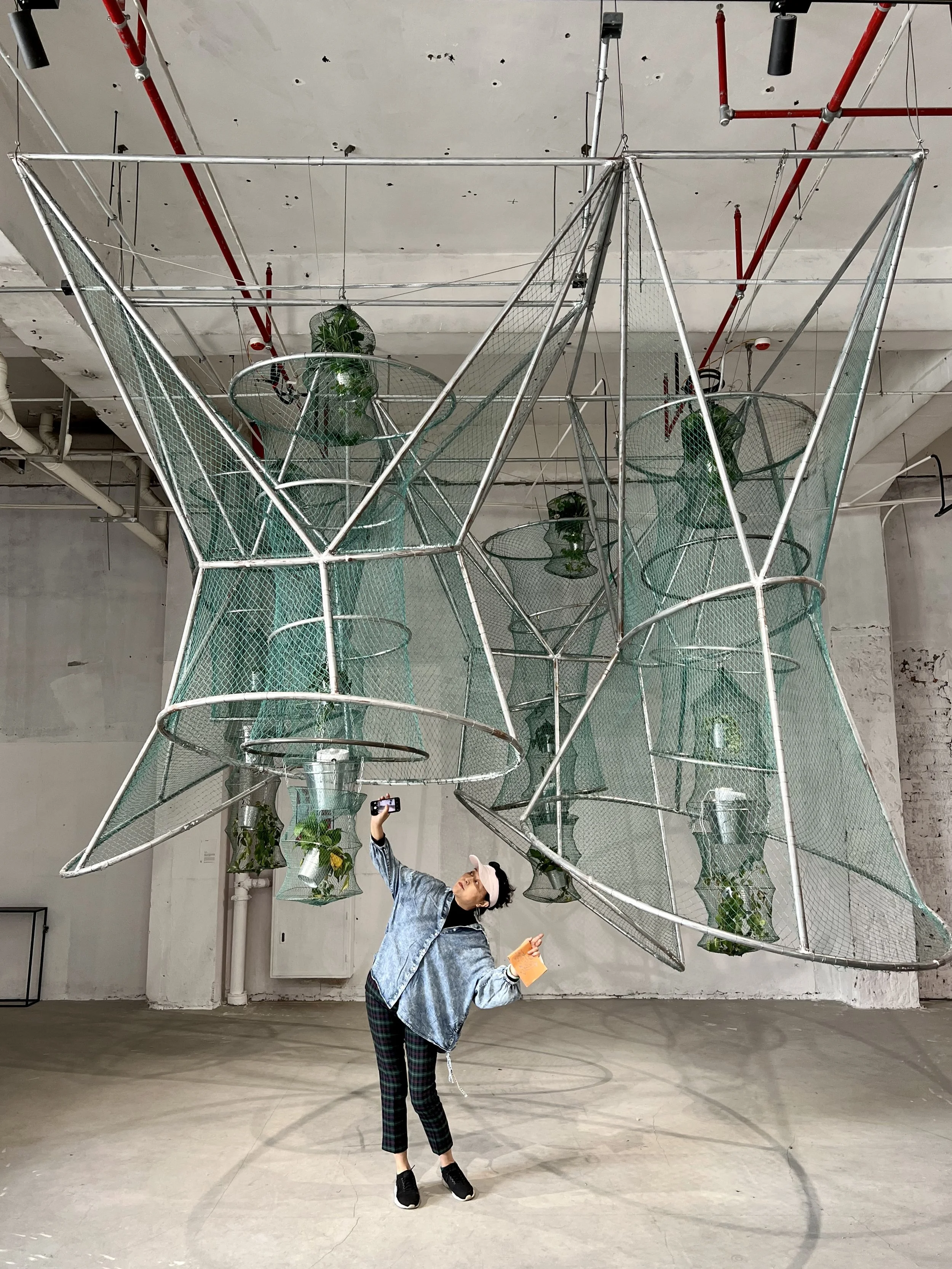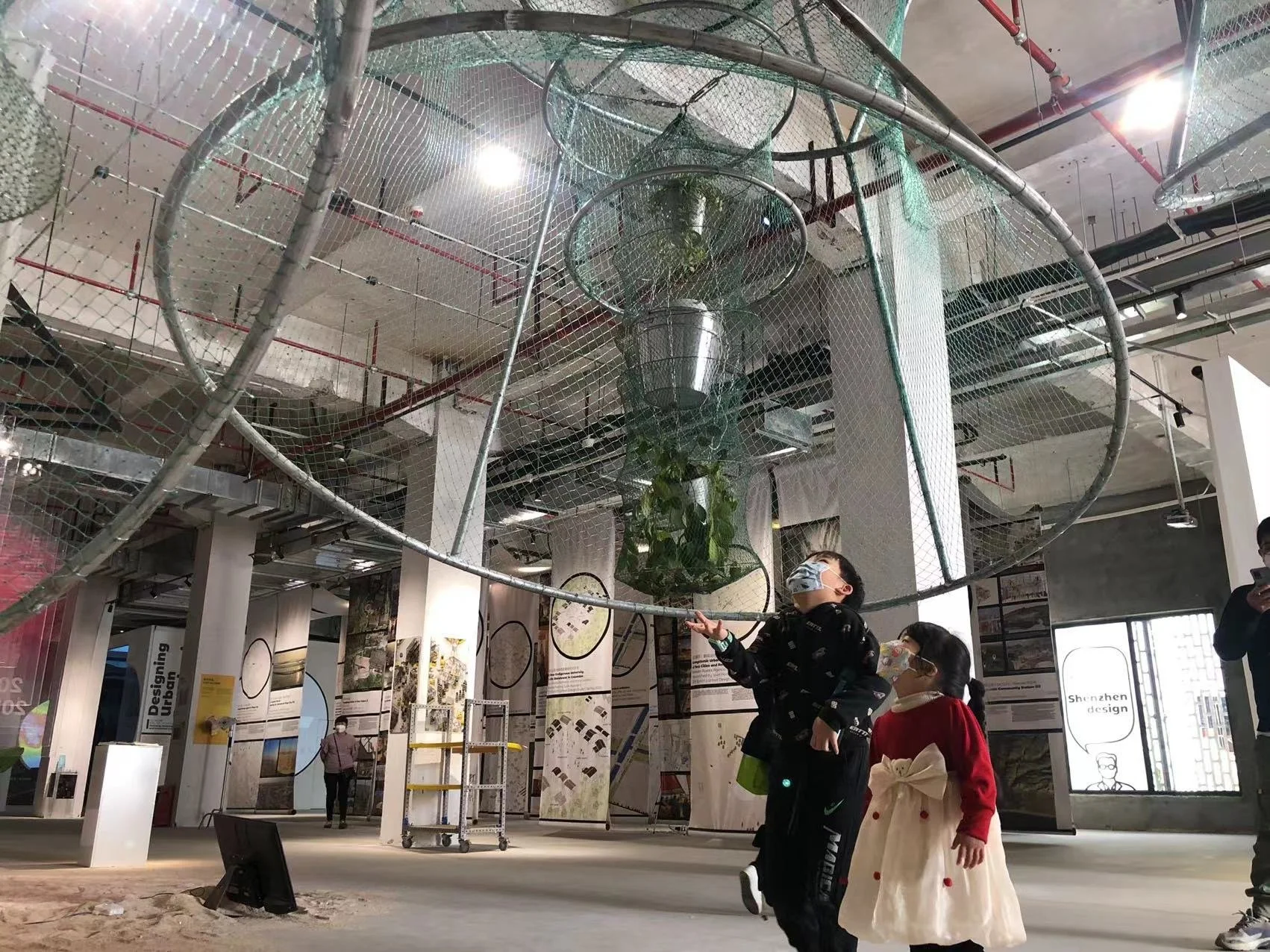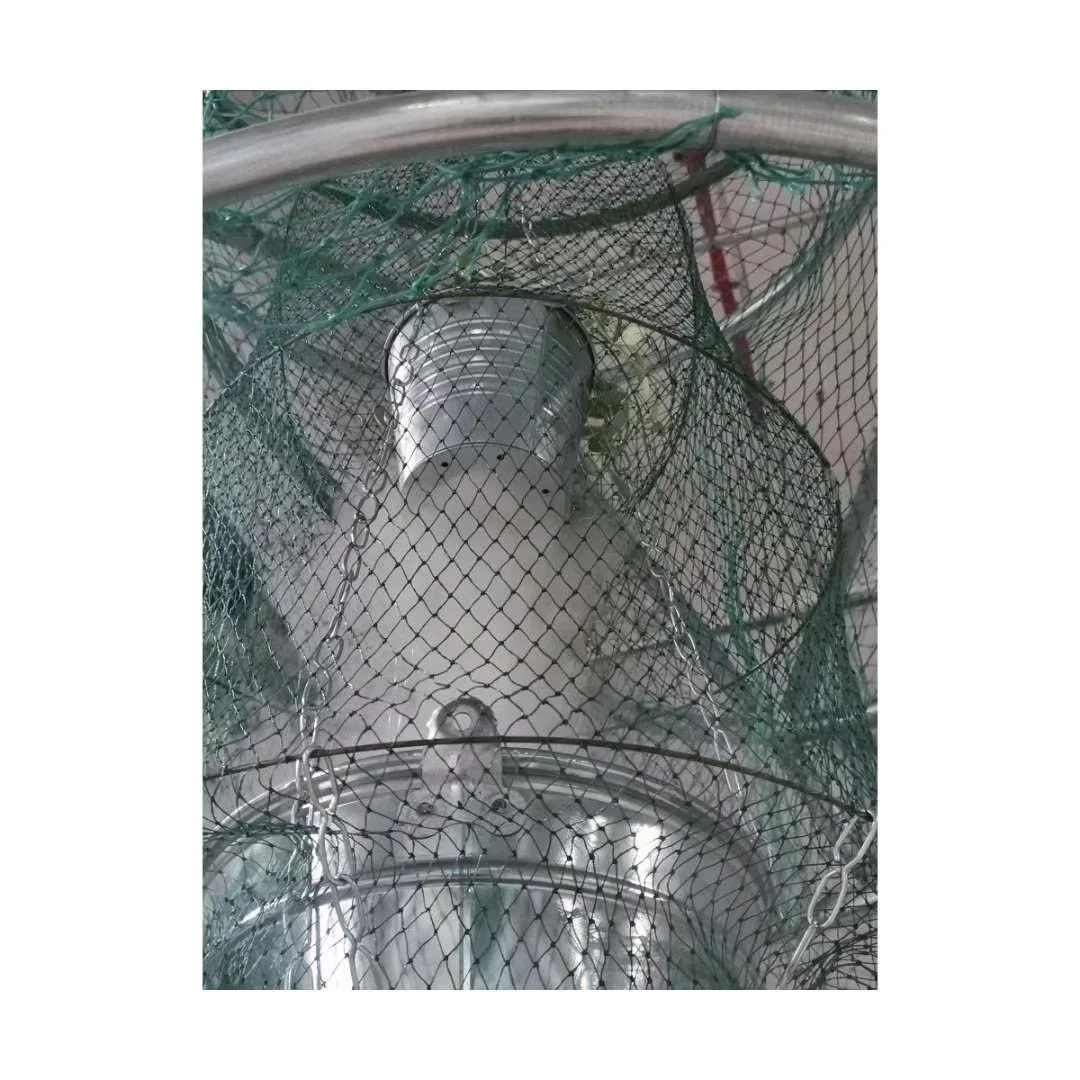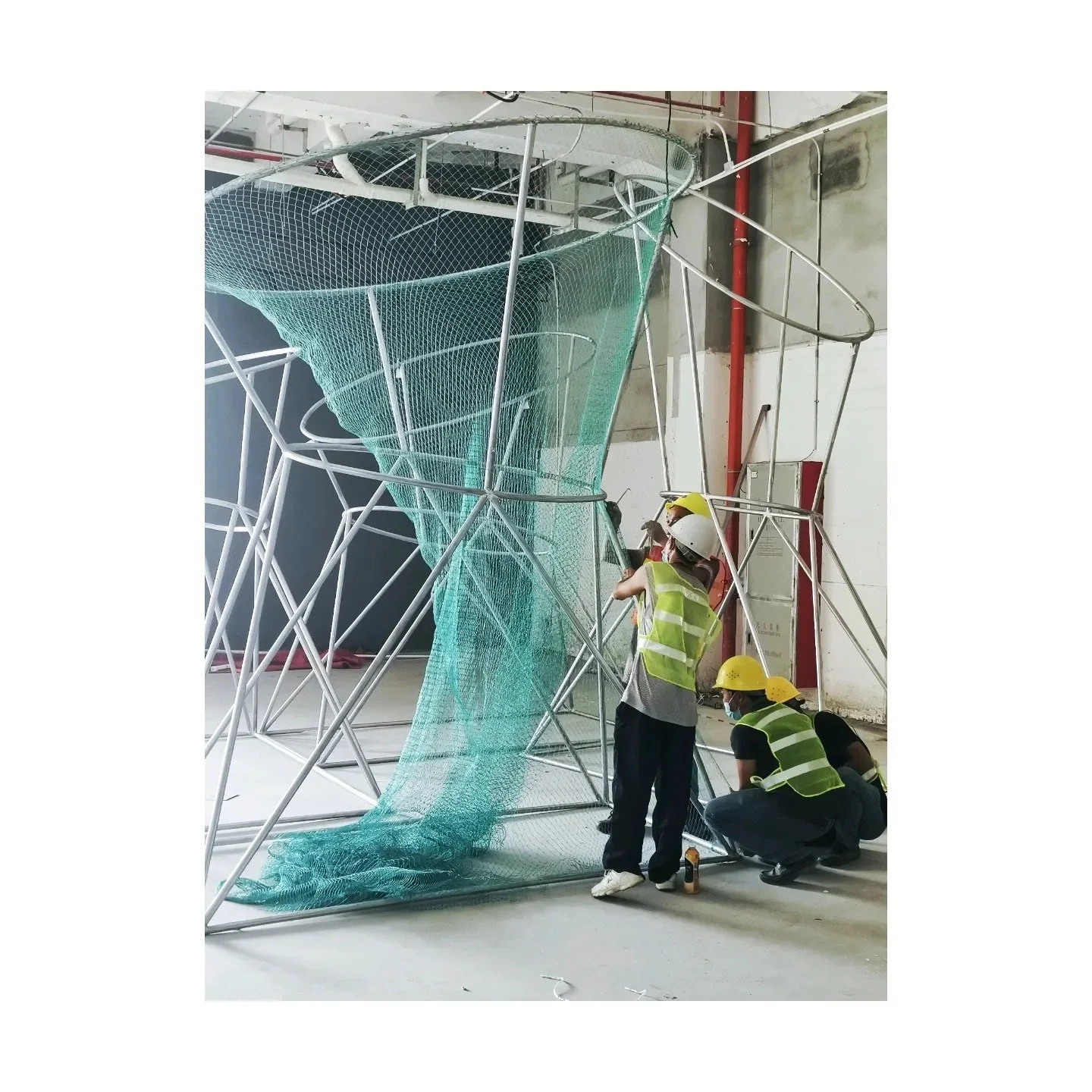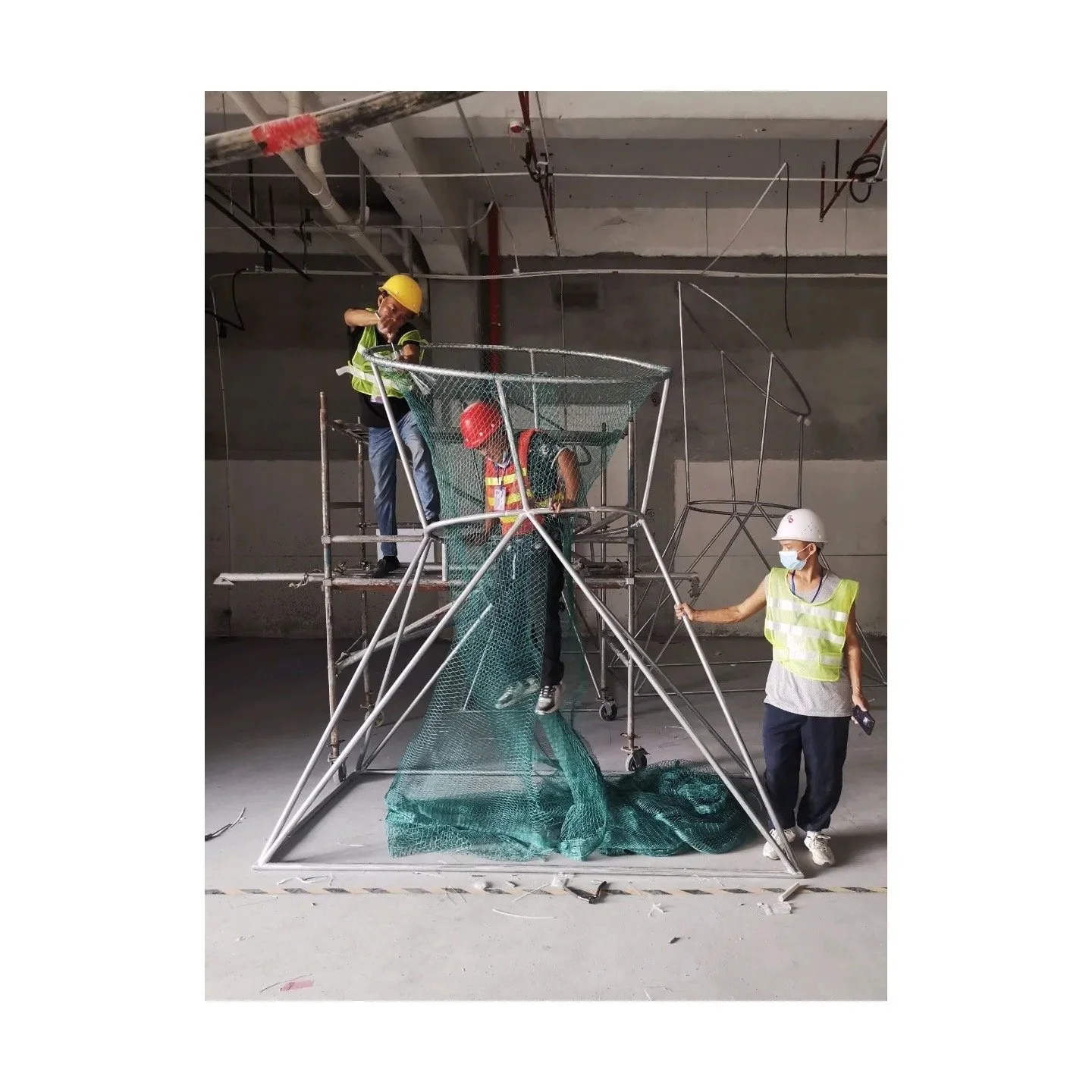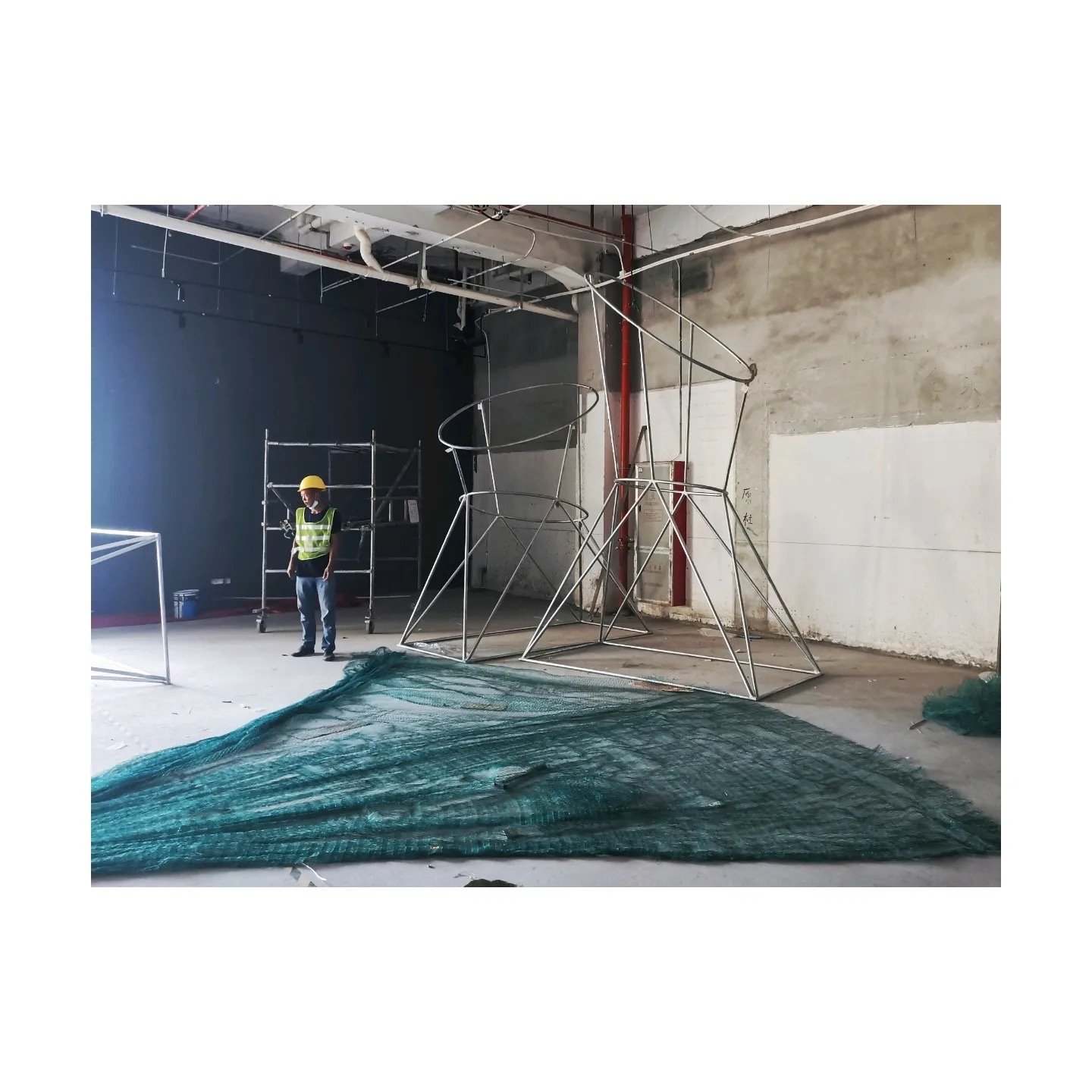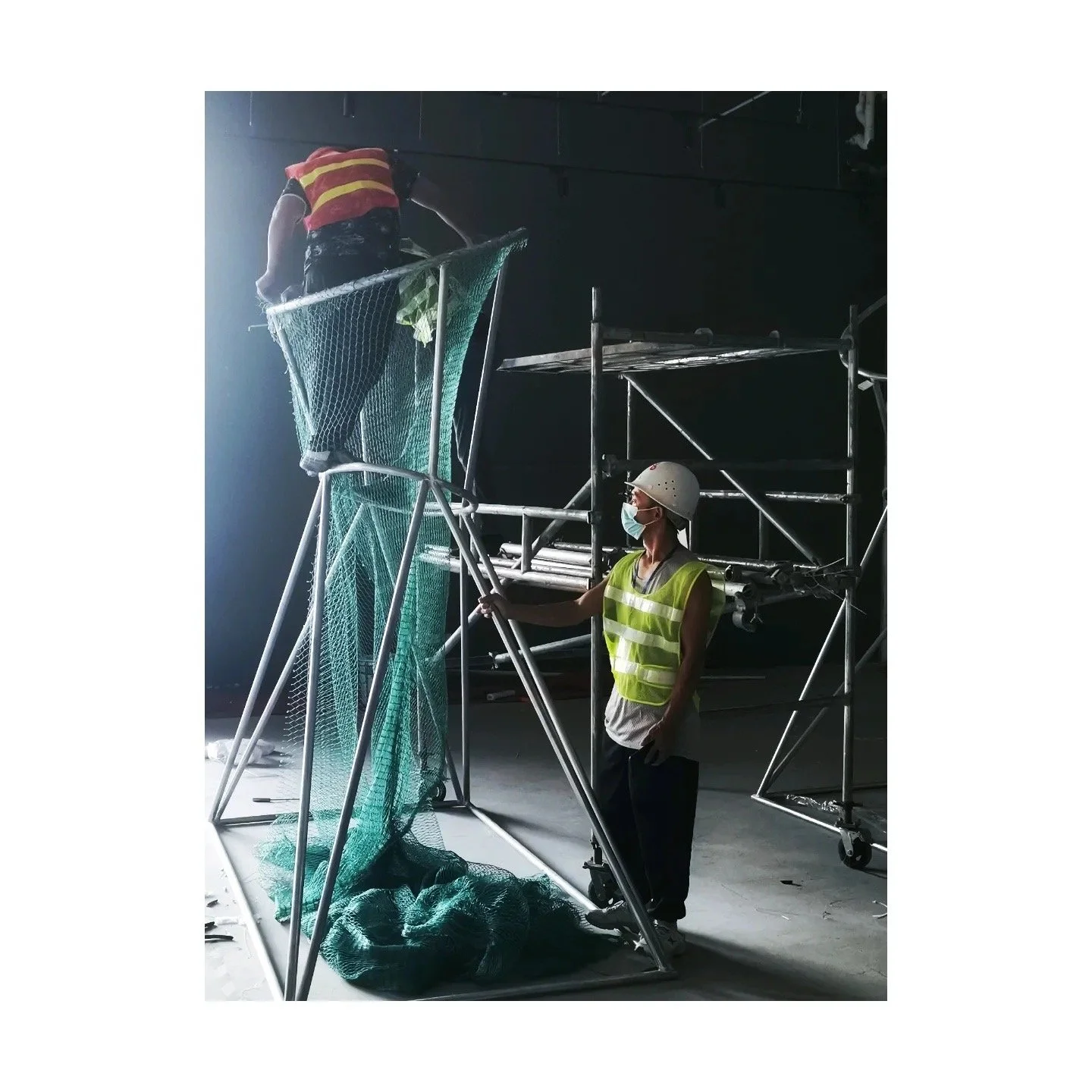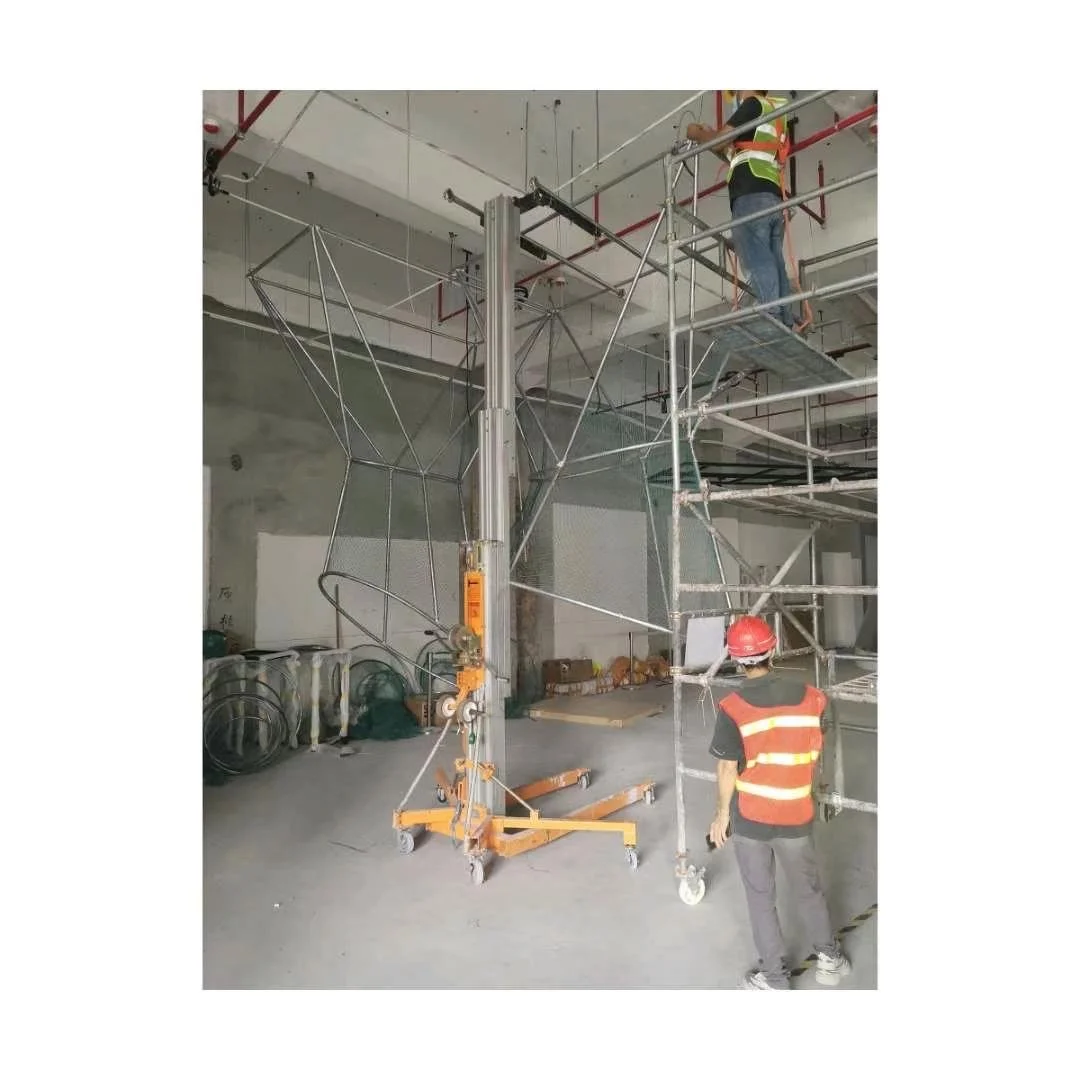
Becoming Lo Ting/ Fishing
IfWorks+ Su Chang Design Research Office Collaborative Project
9th Bi-City Biennale of Urbanism and Architecture (UABB), Building E
Dec. 2022-Mar. 2023
Principles: Ruo Jia, Su Chang
Design Team: Lam Hin Fung Sherman, Lam Yu Sze, Mao Yueyang, Leung Man Wah, Kong Ling Yiu
Realization Team: LIU Si, CHEN Hui, LI Sen, anonymous
Media Team: XIAO Caizi, LI Jing
成为渔亭
IfWorks+ Su Chang Design Research Office合作出品
第九届深港双年展 (UABB),E栋
2022/12-2023/03
主创:贾若,蘇暢
设计团队:林顯峰,林語詩,毛悅煬,梁旻樺,江令瑤
制作团队:刘思,陈辉,李森,匿名
媒体团队:肖才子,李靖
Our installation enables participants to actively enroll in the construction of posthumanist and multi-subject environmental technologies with “Fishing:” as an act, an animal, an event, and an architecture. In doing so, they will reconnect with the half-land-half-water cultural unconscious of the Pearl River Region, and explore a different attitude of inhabiting: “More is Balance.”
Instead of “Balance is More”, following Mies’s “Less is More” where “More” is a vague virtue and “Balance” as well as “Less” are the “solutions” architects create and generate in heroic ways, we say “More is Balance.” Only when “More,” namely, diversities of the environment from a posthumanist perspective, is accepted as the collective subject engaging in environment making, who are in turn the environment itself, overcoming the architectural heroism as well as anthropocentrism, can we reach “Balance”—which might be a virtue replacing that of “sustainability”. Such a “balance” could be close to the “durability” in Bruno Latour’s consideration, where the network consisting of humans and non-humans in reaching a transforming socio-eco-political stability is considered “society made durable,” or “technology.”
Our installation exposes the framework of taking water, vegetation, and human as a transspecies socio-eco-political system where diverse agents together create an environment. It assumes the form of pavilions, where herbal plants and water vapor are present in fields open to connect with human bodies of various situations.
我们的装置提供了一个“成为渔亭”的机会,让参与者直观地加入到一个后人类多元主体的环境技术建构中,重新连接粤港澳地区半水生、半陆生的文化意识,并在其中发掘“多即是平衡”的不同栖居态度。
与其说“平衡即是多”——延续密斯的“少即是多”宣言:其中“多”成为了一种模糊的理想品质,而“平衡”和“少”成为建筑师英雄主义的创造和生产的“解决办法”—— 我们说“多即是平衡”。只有当“多”,即后人类主义视角下的环境的多样性,被接受为了环境制造的主体,也亦是环境本身,克服建筑英雄主义和人类中心主义,我们才能达到平衡:可能是一种替代“可持续”的品质。这一“平衡”可能接近于布鲁诺·拉图尔所考虑的“经久性”——当人类和非人类共同创造的网络形成一种社会-环境-政治的变动中的稳定性,作为“经久社会”或是“技术”。
为了探索这一建筑环境的后人类主义集体主体,并且思考基于珠三角语境的“可持续” 可能性,我们的装置展示将水,植物,人类,建筑看作一个共同创造环境的跨物种社会- 生态- 政治系统的框架和行为发生场所。以亭子的形式, 它强化了植物和水气在场域中的向不同情况人类身体开放联结的存在。
Inhabiting (Dec.2022-Feb. 2023)
Realized (Dec. 2022)
Constructing (Nov.-Dec. 2022)
Design Developing (June-Dec. 2022)
Conceptualized (June 2022 (and beyond))
